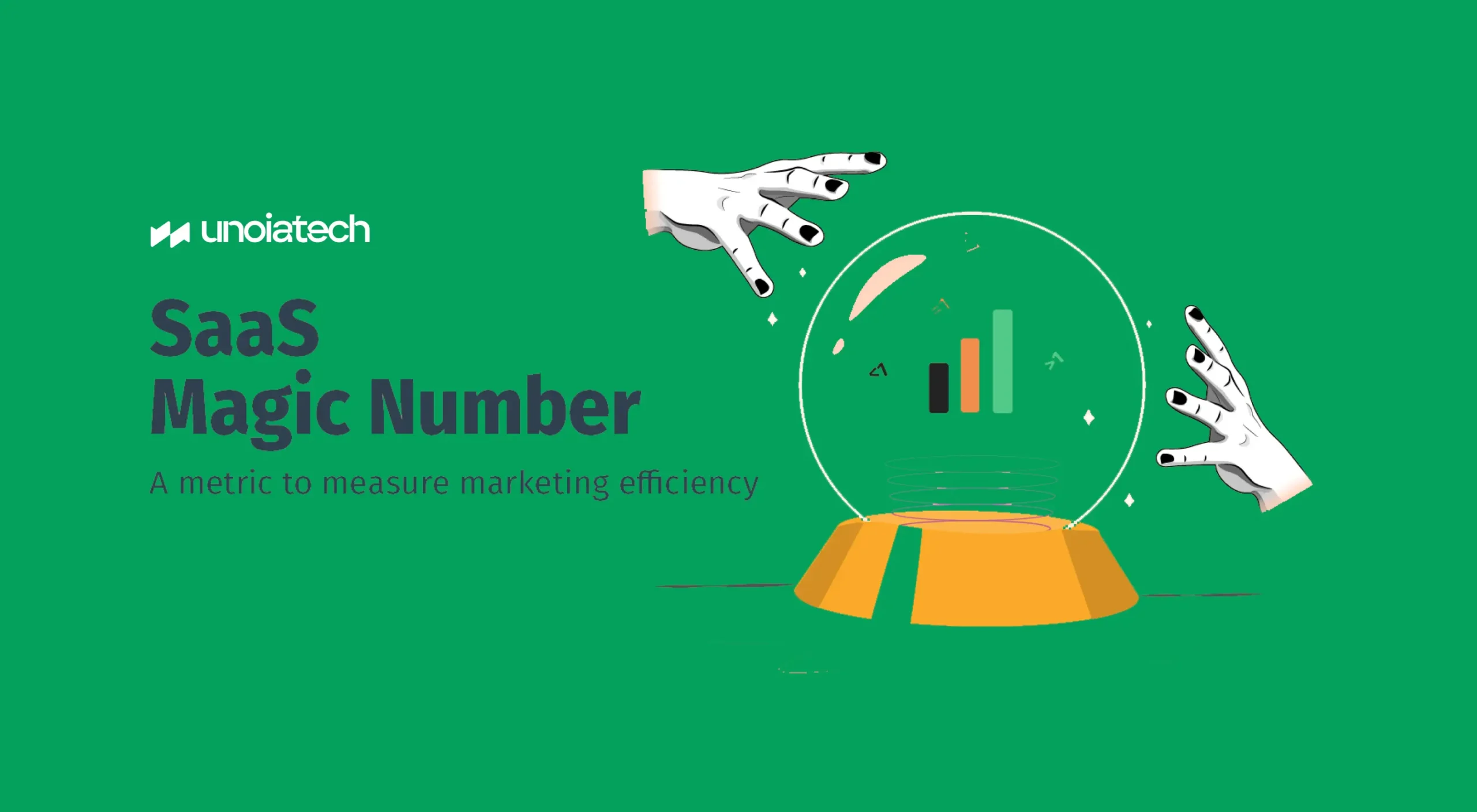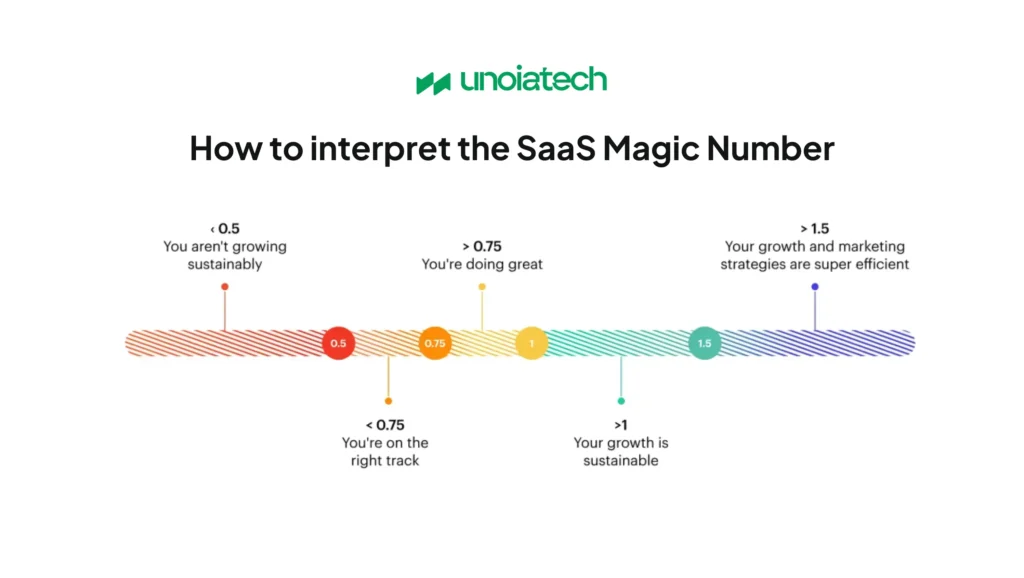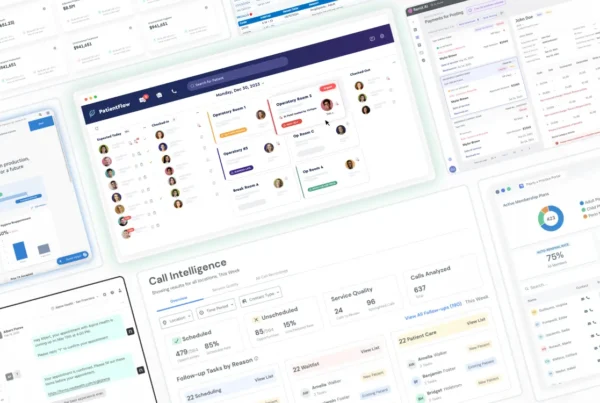
The SaaS Magic Number is a critical metric for measuring sales efficiency in SaaS businesses, both for startups and established companies. It provides valuable insight into how effectively your sales and marketing efforts drive revenue growth. In this article, we’ll dive into what the SaaS Magic Number is, how to calculate it, and why it’s essential for business success. We’ll also explore how you can improve this metric and avoid common pitfalls along the way.
What Is the SaaS Magic Number?
The SaaS Magic Number is a metric that measures how efficiently a company can generate new recurring revenue from its sales and marketing investments. It gives you a clear picture of the health of your sales and marketing efficiency, which is crucial for scaling your business.
It helps answer key questions, such as:
- Are you spending too much on acquiring customers?
- Is your sales process too expensive compared to the revenue it generates?
- How quickly are you recouping your sales and marketing investments?
This metric is vital because it reveals how much value you get from your sales and marketing expenditures. A healthy SaaS Magic Number signals that your business model is working and that you can focus on growth, while a low number indicates inefficiency and the need for adjustments.
Why Is the SaaS Magic Number Important?
Understanding and monitoring your SaaS Magic Number is critical for several reasons:
- Sales Efficiency: The Magic Number reveals how effectively your sales and marketing dollars are being used to generate revenue. It allows you to assess whether you’re spending too much on customer acquisition or whether your revenue is growing efficiently.
- Scalability: A high Magic Number indicates that your business is in a good position to scale. When your sales efficiency is strong, you can invest more confidently in customer acquisition, knowing that you’ll generate returns on those investments.
- Growth Forecasting: The SaaS Magic Number helps you determine whether you need to adjust your growth strategy. If your Magic Number is too low, you might need to reevaluate your pricing strategy, customer acquisition approach, or operational costs to improve profitability.
- Investor Confidence: For companies seeking investment, a strong Magic Number can be a significant selling point. Investors want to see that you’re not just growing your revenue but doing so in a cost-efficient manner.
How to Calculate the SaaS Magic Number
The SaaS Magic Number is calculated using the following formula:
(Current Quarter’s Revenue – Previous Quarter’s Revenue) x 4 ÷ Previous Quarter’s Sales & Marketing Expenses

Let’s break down the formula step by step:
- Current Quarter’s Revenue: This is the revenue generated in the most recent quarter, specifically the Monthly Recurring Revenue (MRR).
- Previous Quarter’s Revenue: The revenue generated in the quarter before the current one.
- Sales & Marketing Expenses: This includes all costs related to sales and marketing efforts in the previous quarter.
Multiply the difference between the current quarter’s revenue and the previous quarter’s revenue by 4 (to annualize the growth), and then divide it by the sales and marketing expenses from the previous quarter.
Example of SaaS Magic Number Calculation
Suppose your current quarter’s revenue is $500,000, and your previous quarter’s revenue was $450,000. Let’s also assume that your previous quarter’s sales and marketing expenses were $150,000. Here’s how the calculation would look:
($500,000 - $450,000) x 4 ÷ $150,000 = $50,000 x 4 ÷ $150,000 = 1.33
In this example, your SaaS Magic Number would be 1.33, which is a healthy indicator of sales efficiency.
Interpreting Your SaaS Magic Number
Once you’ve calculated your SaaS Magic Number, it’s essential to understand what it means for your business:
- Less than 0.5: If your Magic Number is below 0.5, it’s a red flag that something in your sales process or business model needs fixing. This could point to issues with product-market fit, high operational costs, or poor sales efficiency.
- 0.5 to 0.75: If your Magic Number is between 0.5 and 0.75, you’re on the right path, but there’s still room for improvement. Your customer acquisition costs may still be too high, or your revenue growth might not be keeping pace with spending.
- Above 0.75: A Magic Number above 0.75 indicates that your SaaS business is in a strong position. You’re acquiring customers efficiently and may want to consider ramping up marketing and sales efforts to scale growth. If your Magic Number exceeds 1, it means you’re generating more than a dollar of revenue for every dollar spent on sales and marketing.

Why You Should Focus on Your SaaS Magic Number
Focusing on the SaaS Magic Number can provide clarity and focus for your business strategy. Here’s why:
- Resource Allocation: By tracking your Magic Number, you can make data-driven decisions about where to allocate resources. For example, if your Magic Number is low, you might cut back on inefficient marketing channels and redirect that budget toward more effective tactics.
- Sales and Marketing Alignment: The SaaS Magic Number encourages tighter alignment between sales and marketing teams. Both teams will work more efficiently when they have clear metrics to track and goals to reach.
- Strategic Decision-Making: Whether you’re deciding to expand your team, increase your marketing spend, or pursue additional funding, the SaaS Magic Number can guide these decisions by providing insight into the health of your business.
How to Improve Your SaaS Magic Number
Improving your SaaS Magic Number can help accelerate growth and improve profitability. Here are a few strategies to consider:
- Increase Revenue:
- Upsell and Cross-sell: Drive more revenue from existing customers by offering upgrades, add-ons, or complementary products.
- Shorten the Sales Cycle: Streamline your sales process to convert leads faster, which can improve the efficiency of your marketing spend.
- Reduce Customer Acquisition Costs (CAC):
- Optimize Paid Channels: Eliminate underperforming paid marketing channels and focus on high-conversion channels such as SEO, content marketing, or referral programs.
- Improve Lead Qualification: Ensure your sales team is focusing on high-quality leads to avoid wasted efforts and resources.
- Improve Customer Retention:
- Reduce Churn: High churn can negatively impact your Magic Number. Invest in customer success and retention strategies, such as better onboarding, to keep customers longer and increase lifetime value (LTV).
Common Pitfalls to Avoid with the SaaS Magic Number
While the SaaS Magic Number is a valuable metric, it’s important to avoid relying on it exclusively. Here are a few common mistakes:
- Ignoring Other Metrics: The SaaS Magic Number is useful, but it doesn’t tell the whole story. Be sure to consider other key metrics like customer lifetime value (LTV), customer acquisition cost (CAC), and gross margins.
- Focusing Only on Revenue Growth: A high Magic Number is great, but if it’s driven by existing customers rather than new acquisitions, you might face long-term growth challenges. Always keep an eye on new customer acquisition alongside the Magic Number.
- Neglecting Operational Costs: The Magic Number doesn’t account for costs beyond sales and marketing, such as product delivery or customer support. Ensure you’re also tracking these costs to get a complete picture of profitability.
Conclusion
The SaaS Magic Number is a vital metric for SaaS businesses, providing a clear snapshot of how efficiently your sales and marketing efforts are driving revenue growth. By calculating and understanding this number, you can make smarter decisions about scaling your business, optimizing resources, and improving profitability.
Remember, while the Magic Number is powerful, it should always be used in conjunction with other important metrics to ensure you’re getting a holistic view of your business health. Whether you’re just starting or scaling up, tracking your SaaS Magic Number can help you grow more efficiently and sustainably.









